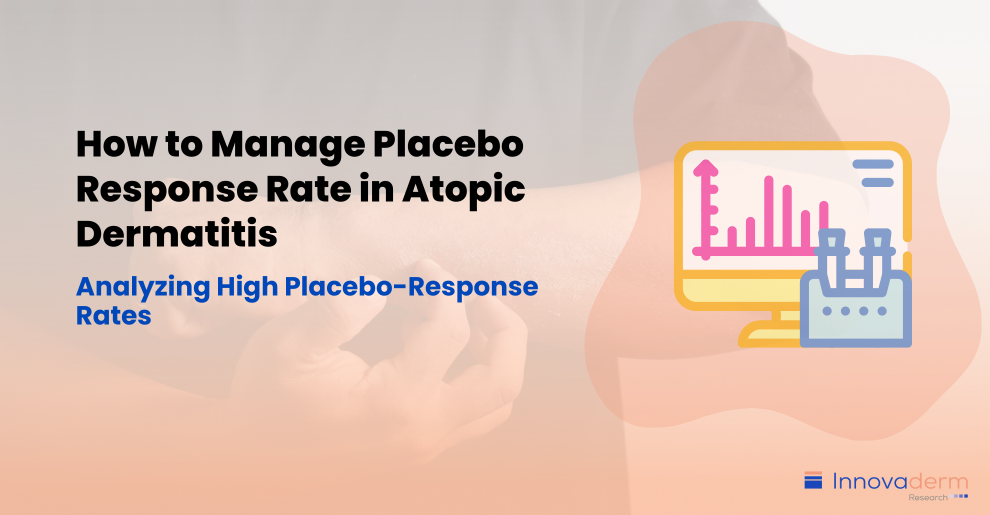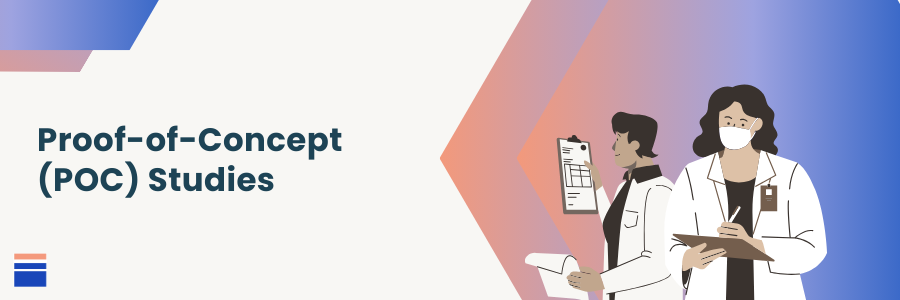
Welcome to the final installment of the series on placebo response rate in atopic dermatitis (AD). The first articles of this series shed light on the complexities and nuances of placebo response rates in AD and on strategies on how to ensure a reasonable response rate. This third and final article dives into the analysis of high placebo-response rates and the strategies to handle them effectively. It explores scenarios encountered in Proof-of-Concept (POC) studies, the importance of comprehensive evaluation, and the role of post-hoc analyses and additional endpoints.
Proof-of-Concept (POC) Studies

This is a scenario we occasionally encounter, particularly in smaller studies. With a smaller sample size, the likelihood of observing a higher than anticipated placebo response rate increases. However, this does not necessarily imply that the study was poorly conducted or that the evaluations were flawed. As previously mentioned, if many patients are enrolled during a flare-up, or if a few patients are using prohibited medications without informing the study team, a high placebo response rate might be observed.
When it occurs, it is crucial in a POC study to perform a comprehensive evaluation of the higher-than-expected placebo response to determine the effectiveness of the medication. In these cases, the analysis of patient reported outcomes and biomarkers, especially very early after randomization, can help assess potential efficacy. This is particularly important in phase 2a and phase 1b studies. If early phase studies suggest that the medication is safe and effective, it will likely progress to a later phase study. If the conclusion is different, development in AD may be halted.
How to Handle High Placebo-Response Rates

1. Conducting Post-hoc Analyses
There are several approaches to address issues in clinical data analysis. One option is to conduct sub analyses, such as post-hoc analyses. For instance, if there is evidence that issues arise from data generated at specific sites or from a particular country. However, one should be cautious about this approach because selectively excluding data may increase the risk of type 1 errors.
2. Additional Endpoints
Another strategy we find valuable is to explore alternative endpoints beyond the primary ones. These endpoints should be independent of the evaluated outcomes. For instance:
- Pruritus: almost all patients with AD will complain of pruritus and improvements in pruritus are expected if skin lesions improve.
- Biomarkers: skin biopsies or tape stripping can reveal biomarkers that are more sensitive than visual evaluations, such as IGA or EASI. These biomarkers can provide additional evidence of treatment, especially if performed very early in the trial before patients could use prohibited or rescue medications.
- Quality of Life (QoL) Questionnaires: assessing the patient’s QoL can provide valuable insights beyond clinical measures. It helps capture the impact of the disease on the patient’s well-being and daily functioning.
If biomarkers, pruritus, and QoL all move in the same direction, even if not statistically significant individually, it suggests the drug may be effective. In such cases, pursuing larger studies with larger sample size is warranted. A holistic approach considering multiple endpoints can enhance our understanding of treatment effects and guide further research.
Conclusion
In conclusion, managing placebo response rates in AD clinical trials is a complex task that requires a deep understanding of various factors. This article has highlighted the importance of comprehensive evaluation, particularly in Proof-of-Concept (POC) studies, to discern the true effectiveness of a medication amidst high placebo responses. Thus, a holistic approach that considers multiple endpoints can significantly enhance our understanding of treatment effects in AD, guiding future research and aiding in the development of effective therapies.



